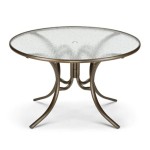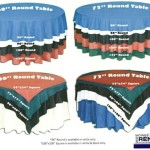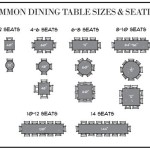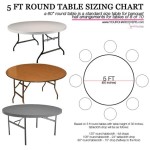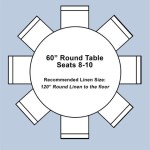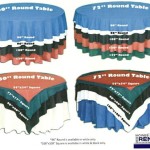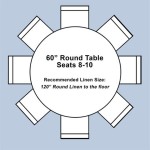What Is The Traditional Top Table Seating Plan?
The top table, a central element in many formal events, particularly weddings, is where key individuals gather to celebrate and be recognized. The traditional seating plan for the top table is meticulously arranged, adhering to established etiquette and reflecting the relationships between those seated. Understanding the structure and significance of this arrangement is crucial for event planners and those directly involved, ensuring a smooth and respectful execution of the event.
The primary objective of the traditional top table arrangement is to honor and showcase the principal figures central to the occasion. In the case of a wedding, this typically includes the bride and groom, their parents, and possibly key members of the wedding party, such as the best man and maid of honor. The arrangement serves as a visual representation of familial ties and the support system surrounding the celebrated couple. It also facilitates introductions and interactions, encouraging a sense of unity and shared celebration amongst the most important people present.
The specific configuration of the top table often depends on the number of guests, the venue layout, and the cultural context of the event. However, the fundamental principles remain consistent: prioritizing hierarchy, balancing representation, and promoting a comfortable and convivial atmosphere. Deviation from these established norms can lead to unintended slights or awkward dynamics, underscoring the importance of adhering to the traditional framework, unless a deliberate and well-considered alternative is chosen.
The Traditional Wedding Top Table: A Detailed Breakdown
In a traditional wedding setting, the top table arrangement is usually linear, allowing all guests to have a clear view of the seated individuals. The bride and groom are typically positioned in the center, representing their central role in the celebration. Flanking them are their parents, usually with the bride's parents on her side and the groom's parents on his side. This arrangement symbolically acknowledges the support and contribution of both families to the couple's union.
Beyond the parents, the best man and maid of honor are generally seated next. The best man, a close friend or relative of the groom, often sits to the right of the groom's father. The maid of honor, a close friend or relative of the bride, is typically seated to the left of the bride's mother. This placement reflects their significant roles in the wedding party and their close relationship with the couple. Other members of the wedding party, such as bridesmaids and groomsmen, may also be included at the top table if space permits, although it is more common for them to be seated at tables closer to the top table.
Specific variations may arise depending on family situations and cultural preferences. For instance, if one parent is deceased or unable to attend, a close relative or friend may take their place. Similarly, step-parents may be included, but their placement requires careful consideration to ensure that all parties feel respected and comfortable. The guiding principle should be to prioritize harmonious representation and avoid creating any feelings of exclusion or discomfort.
Consideration should also be given to the individuals seated next to each other. Ideally, guests seated adjacently should have some level of familiarity or shared interests to facilitate conversation and create a more enjoyable dining experience. Seating plans should, therefore, be constructed not just with hierarchy in mind but with a conscious effort to promote positive interactions amongst the guests.
Key Considerations for Adapting the Traditional Plan
While adhering to the traditional top table seating plan provides a solid foundation, it is essential to recognize that modern weddings and events often necessitate adaptations. Factors such as blended families, non-traditional relationships, and personal preferences can influence the optimal seating arrangement. In these situations, a flexible and empathetic approach is crucial. Open communication with all parties involved can help identify potential sensitivities and ensure that the final seating plan reflects the unique circumstances of the event.
One common adaptation involves accommodating divorced or separated parents. In such cases, it may be more appropriate to seat each parent separately, possibly with their respective partners or family members. Alternatively, some couples may choose to forego the traditional top table altogether, opting instead for a sweetheart table, where only the bride and groom are seated. This arrangement provides them with a private space to enjoy their meal and allows them to interact more freely with all of their guests throughout the reception.
Another consideration is the inclusion of children. If the bride or groom has children from a previous relationship, their inclusion at the top table can be a meaningful gesture. However, it is important to ensure that the children are comfortable with this arrangement and that their needs are adequately addressed. Younger children may require special accommodations, such as high chairs or age-appropriate activities, to keep them entertained during the reception.
Moreover, the cultural context of the event can significantly influence the top table seating plan. Different cultures may have different customs and traditions regarding the roles of family members and the order of precedence. It is essential to research and understand these cultural nuances to avoid any unintentional missteps or offense. Consulting with family members or cultural experts can provide valuable insights and guidance in creating a seating plan that is both respectful and appropriate.
Ultimately, the key to adapting the traditional top table seating plan is to prioritize inclusivity, respect, and open communication. By carefully considering the needs and preferences of all parties involved, it is possible to create a seating arrangement that honors tradition while reflecting the unique characteristics of the event.
Alternatives to the Traditional Top Table
As weddings become more personalized and less bound by strict tradition, various alternatives to the traditional top table have emerged. These alternatives offer greater flexibility and can be tailored to suit the specific needs and preferences of the couple. One popular option is the "sweetheart table," as previously mentioned. This arrangement positions the bride and groom at a small, intimate table, allowing them to share a private moment amidst the celebration. It also frees up space at the other tables, allowing for more flexible seating arrangements for other guests.
Another alternative is to have a "family table," where the bride and groom are seated with their immediate family members, including parents, siblings, and possibly grandparents. This arrangement emphasizes the importance of family and creates a more intimate and informal atmosphere. It can be particularly appealing to couples who are very close to their families and want to share their special day with them in a more personal way.
A third option is to forego a designated top table altogether and instead seat the bride and groom at a different table for each course of the meal. This allows them to interact with a wider range of guests throughout the reception and creates a more egalitarian atmosphere. It also eliminates the potential for feelings of exclusion or favoritism that can sometimes arise with a traditional top table arrangement.
Beyond these common alternatives, couples can also explore more creative and unconventional seating arrangements. For example, they might choose to have a circular table where all of the guests are seated together, or they might opt for a more informal lounge-style setting with comfortable seating and cocktail tables. The possibilities are endless, and the key is to choose an arrangement that reflects the couple's personalities and the overall style of the event.
When considering alternatives to the traditional top table, it is essential to carefully weigh the advantages and disadvantages of each option. Factors to consider include the size of the venue, the number of guests, the desired level of formality, and the personal preferences of the couple and their families. It is also important to communicate the chosen arrangement clearly to all of the guests so that they know what to expect and can feel comfortable and included in the celebration.
In conclusion, while the traditional top table seating plan provides a valuable framework for organizing formal events, particularly weddings, it is by no means the only option. Modern couples have a wide range of alternatives to choose from, allowing them to create a seating arrangement that is both meaningful and personalized. By carefully considering the needs and preferences of all parties involved, it is possible to design a seating plan that contributes to a memorable and enjoyable celebration for everyone.

Arranging Your Wedding Seating Plan And Top Table

The Wedding Top Table Layout

Wedding Top Table Seating Arrangements Aby Joanne Photography

Wedding Top Table Diffe Arrangements

Wedding Top Table Seating Arrangements Aby Joanne Photography

Wedding Top Table Layout Guide The Brewery

Wedding Etiquette Who Sits At The Bridal Table

Traditional Wedding Top Table 2025 Www Angloamericancentre It

Traditional Wedding Top Table

Wedding Top Table Seating Arrangements My Scotland
Related Posts

